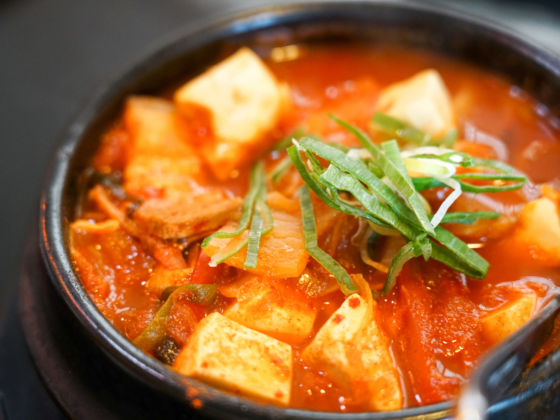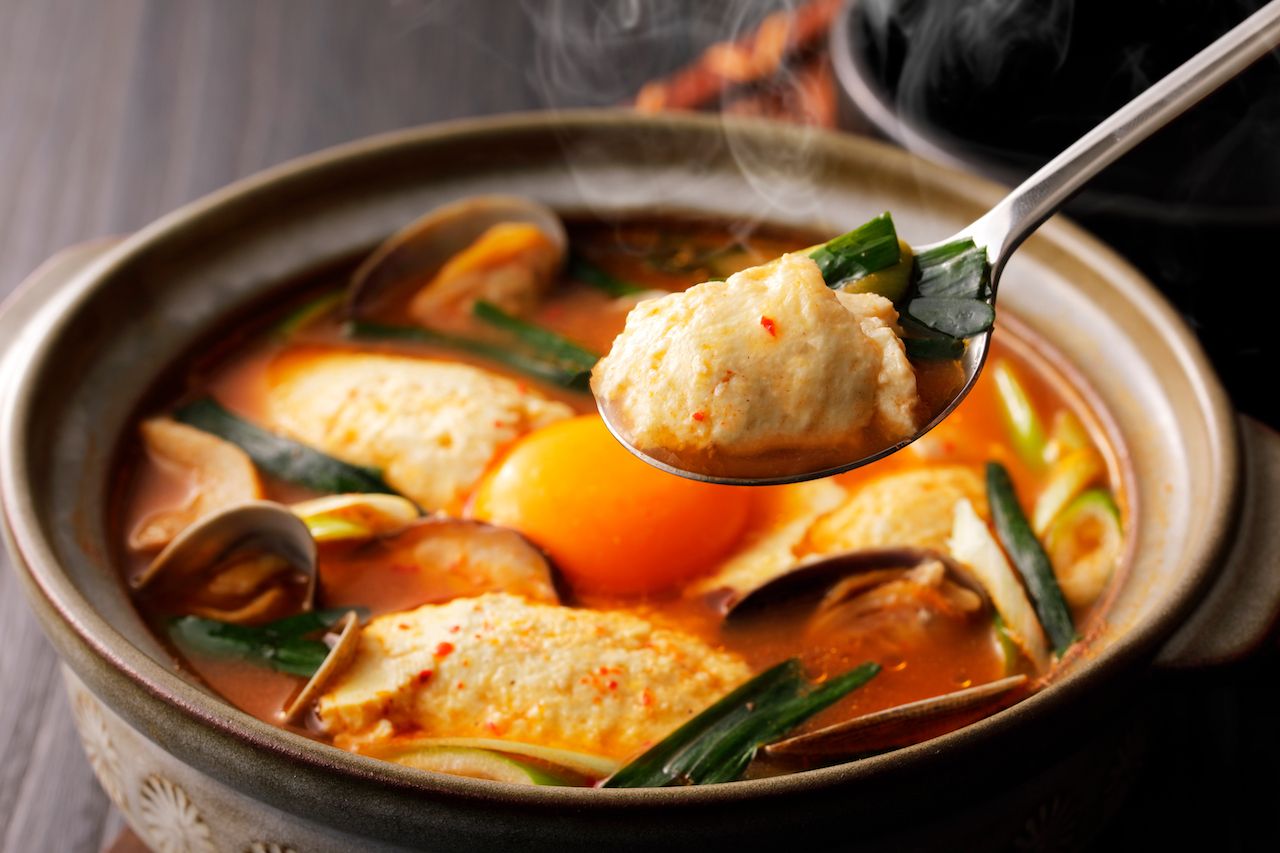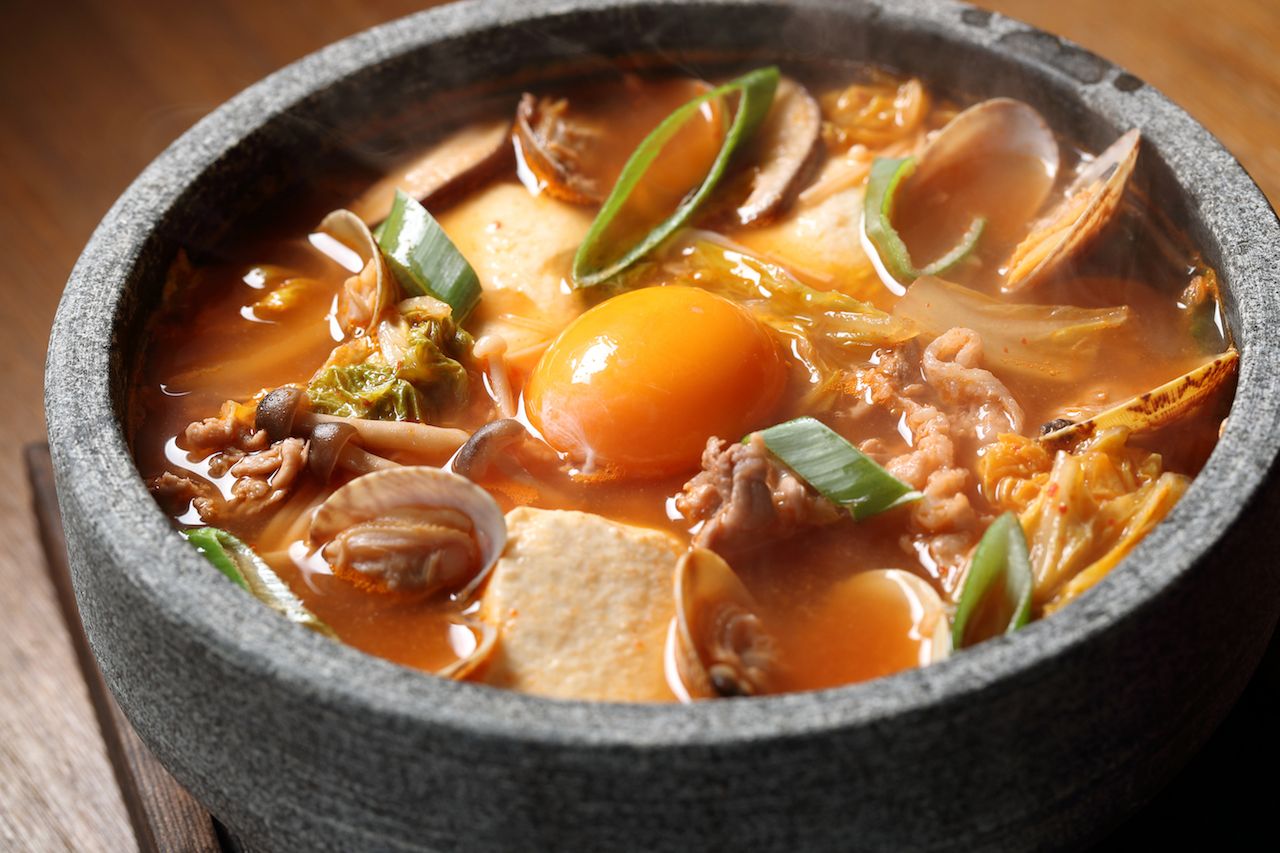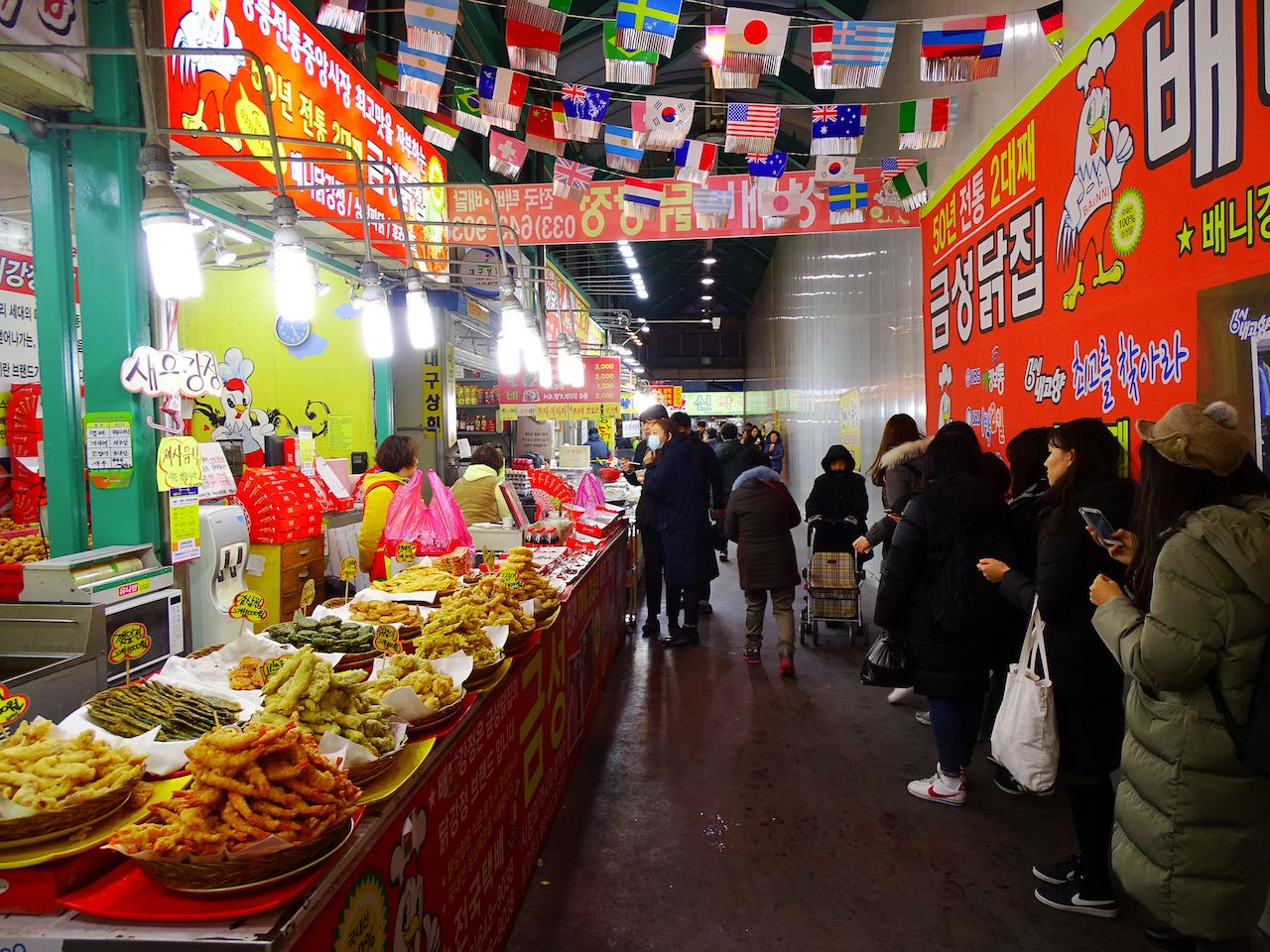South Korea is famous for its tabletop barbecue and pork-heavy bulgogi. While delicious, it can make dining a significant challenge for vegetarians. The solution for a meat-free fix of kimchi and tofu is to head to Gangneung, a coastal city along the Sea of Japan that’s famous for its beaches, its tourist attractions, and, increasingly, its designation as “tofu town.” Also known for being one of the three primary locations for the 2018 Winter Olympics, Gangneung might just be the best place in South Korea for eating a vegetarian diet. Here’s what to expect — and what to eat.


This Tofu Village in Korea Is a Vegetarian's Dream
A different taste for tofu

Photo: norikko/Shutterstock
In central Gangneung, you’ll find a street of restaurants called Chodang Dubu Village (not to be confused with the Chicago area restaurant bearing the same name). It’s a dream destination for vegetarians in South Korea who are craving a fix of guksu (noodles), bap (rice), or juk (rice porridge). The true focus in Chodang Dubu Village is right in the name, though. Dubu is Korean for tofu, and it’s literally the basis for this entire strip of restaurants in the heart of Gangneung. Follow your nose as you walk through downtown while restaurants process Korean soybeans on site from the nearby town of Samcheok-si for their tofu and the smells waft through the neighborhood.
The legend of Chodang Dubu dates back to the reign of the Joseon Dynasty in the 1500s, prior to the area’s takeover by the Korean Empire in 1897. A prominent Joseon political figure, Heo Yeop, settled in the area and was the first to make tofu with the local seaweed-infused water rather than salt. This makes it lighter than the commercial tofu you may be used to. If you’re sick of tofu and not willing to travel around the world for it, a trip to Chodang could re-inspire your taste for curdled soybean milk. It’s claimed that nowhere else in the world makes tofu in the same method.
Nearly 20 tofu-centric dining hubs make up Chodang, each with its own specialties but all coming together to form a tight-knit community. The tofu village as it stands in Gangneung originated in the 1970s as restaurants sought to recreate Yeop’s process, and handmade tofu is a source of immense pride in the neighborhood. Chodang Dubu Village is right in the heart of downtown Gangneung, a collection of palm-lined avenues surrounding gorgeously quaint eateries bustling with visitors from across Korea as well as Japan and China. The area is seeing increasing amounts of visitors from western countries, as well, thanks in part to publicity from the Olympics.
What to eat in Chodang Dubu

Photo: Nishihama/Shutterstock
Your first port of call is Wonjo Chodang Sundubu for a bowl of the namesake chodang sundubu. This restaurant has been serving the dish since the 1930s. It’s become a local specialty, built around tofu fermented with seaweed from the nearby coast that gives the tofu a distinct flavor. Kimchi comes on the side, and you’ll want to add a hefty amount of soy sauce to accent the flavor of the seaweed. The plate looks quite bland but offers vegetarians the often unavailable taste of the sea. Dubu-kimchi, simply kimchi with tofu, is equally popular throughout the neighborhood.
The next dish to try as you move through the village is sundubu jeongol. This is a soup made with the same tofu used in Chodang Sundubu, served spicy and hot-pot style. You can find it at most of the Chodang tofu shops, so take your time browsing the district and stop into whichever establishment beckons. If you’re able to stomach a third stop, try a curry dish with rice. The tofu served in Chodang is often described as having a “milky” taste to it, an accent complemented by the veggies and robust spiciness of Korean curry dishes.
Eating meat in Chodang Dubu

Photo: gontabunta/Shutterstock
If you’re traveling with a mixed group of vegetarians and meat eaters, Gangneung is one of those rare places where satisfying everyone in the party is easy to do. Gangneung has excellent seafood due to its seaside location, and many spots in tofu town even offer fish either as a main or an ingredient in soups, such as a spicy seafood pot called haemul jjim. Tofu is the star here, but it’s not the only protein to be found. You’ll find clams included in some tofu soups and dishes, including the popular sundubu jjigae, along with raw fish.
Travel tips

Photo: Sagase48/Shutterstock
To get to Gangneung, the easiest route is to take a 3.5-hour bus ride from Seoul. Once you’re there, note that many spots in Chodang Dubu Village focus on lunch and aren’t open for dinner. Though not true across the board, if you plan to do a food crawl, it’s best to do your rounds in the afternoon to make sure everything is open. A typical meal costs between 9,000 KRM and 15,000 KRW (about $8-10), and carrying cash makes everything easier for both you and the restaurant. Most spots have English menus though you may have to employ a bit of pointing to signal what you’d like to order as an English-speaking server is no guarantee. You can also take a guided tour of the neighborhood, which includes stops at some of the more popular spots.
Restaurants tend to get busy over lunch, but many have spacious dining rooms and are accustomed to getting people seated and fed quickly. Do yourself a favor and allow extra time if you have other stops on your agenda. There’s a lot of restaurants to get through in the area, and while there’s no need to try them all — that’s far too much soy for one trip — sharing plates with a partner will help you check more off the list.